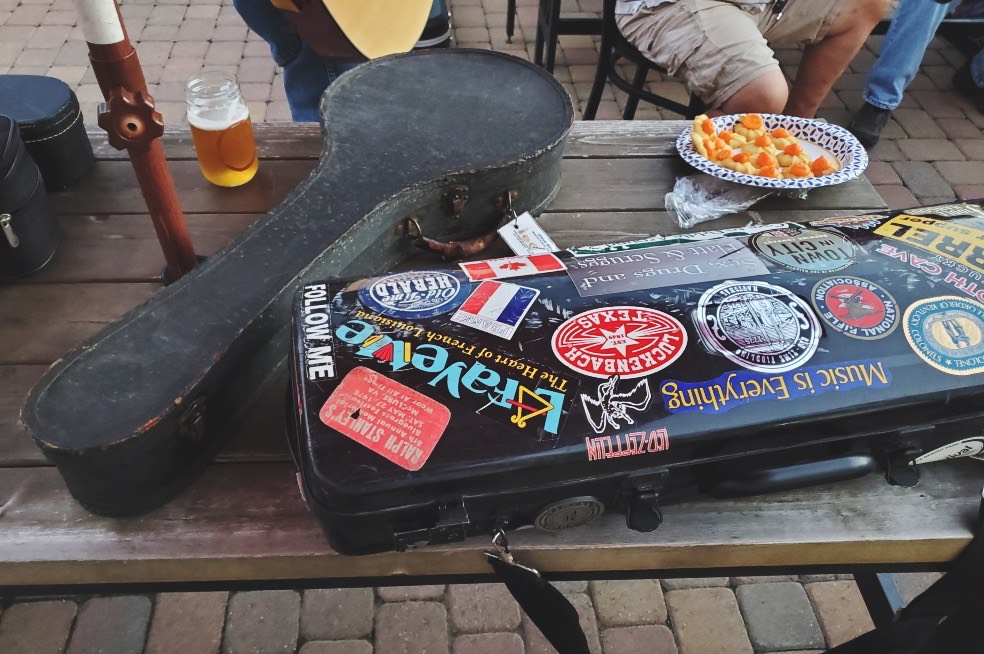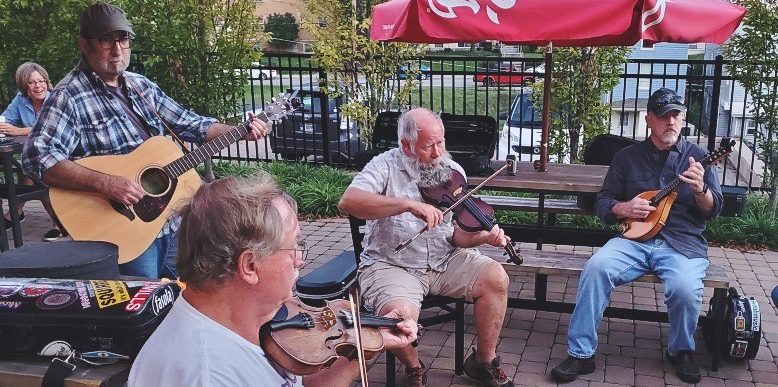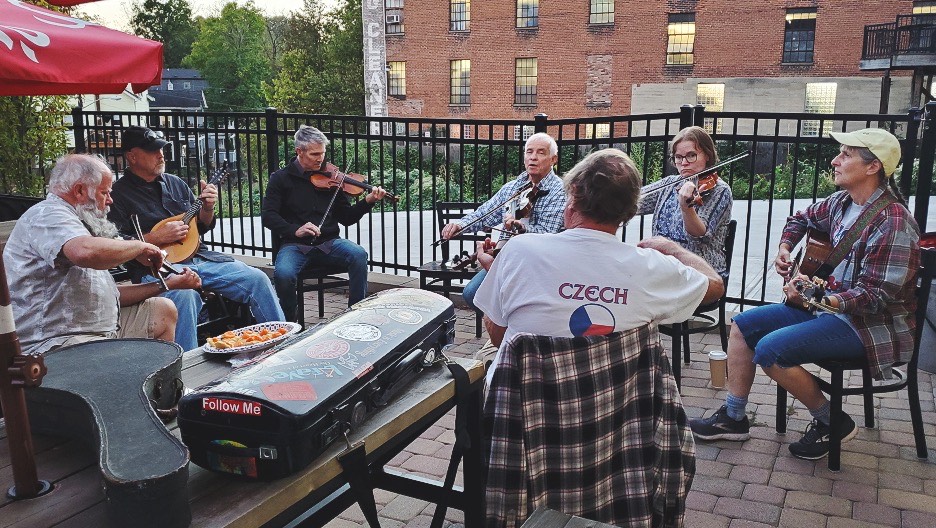On the Urban Appalachian Community Coalition Cultural Resource Directory, you will find a musical listing that is curious for not being an “act” or a band. Greater Cincinnati Old Time Music is more of a movement, or perhaps a cultural current all its own. In fact, Greater Cincinnati Old Time Music is part of a cultural current that has existed within Appalachian folklife longer than anyone can remember. The simple practice of gathering folks together to play music on traditional instruments stretches back to the earliest days of Appalachian culture and back to Europe and Africa.
On Tuesday nights, the group gathers at Bean and Barley in O’Bryonville, although the site for gatherings has changed over the years. On the night I attended there were about ten people. Steve and Donna Bing have been the anchors for the group for some time, but this role has shifted over the years to various people. Steve told me the number of people who gather is usually a dozen to fifteen, but Covid-19 has dwindled their numbers in the past year or so. I’d name all the names of everyone present, but with the exception of Marisa and Donna, everyone seemed to be named Mike or Jeff. Multiple fiddles, guitars, and one mandolin made up the combo, although several people switched between fiddle and guitar, and one person switched to a small banjo for a song or two.
You could easily get the impression that these people rehearse together, and all have a close knowledge of what they are playing. The truth is more interesting. The musical styles fit specific patterns. People who know old time music understand these patterns. Simply by knowing what key they are in they can listen and pick up the patterns even without knowing how to play the song. This is one of the signature features of what we now call old time music.

Old time music is not exactly a musical genre in itself. It is a collection of musical styles that have their origins in England, Ireland, Scotland, Germany, and Africa. All these musical voices came together in the Appalachian region with settlers. The meeting of European musical forms and African forms came early, and the familiar banjo remains part of that legacy. There have been some notable artists who put old time music on the world stage, Aunt Samantha Bumgarner, Doc Watson and the Carter Family are among the most famous, but the tradition of old time music is far more familiar in kitchens and general stores than in the Grand Ole Opry.
As the musicians played, fiddle player Michael Thompson, took the time to tell me how some of the musical forms worked. Thompson explained, “These are mostly reels and dance tunes. If you listen carefully you can hear how the different styles of bowing the fiddle create sounds that are almost orchestral.” Thompson went on to tell me that the people who gather here come from a diverse set of musical backgrounds: “There are people whose background is in classical music. Some are jazz players. And there are a few who are steeped in the tradition of old time music.” This diversity creates the harmony of the music, but it also speaks to the cultural harmony old time music grows from and sustains.
Michal Thompson pointed out how you can tell some things just from the way people hold their fiddle: “Some people here hold the fiddle right under the chin. That is the standard classical method and goes back to the baroque.” Thompson then drew my attention to one fiddler who held the instrument to his chest. “That is an old time music fiddler. There was no need to hold the fiddle with the chin for mountain fiddlers,” he told me. I spoke to several people while I listened. Marisa Banes took a break to give me some of her musical background. Marisa is a classically trained musician: “I started on viola when I was nine and switched to violin at 14,” she told me. After making her way through ancient music at renaissance fairs, she finally sat in with her uncle and his group of musicians. This was a pivotal moment. Marisa remembers, “I picked up the bass at first. I’ve studied string methods. I was also the only female musician in this group. Once I played old time fiddle, I just took off from there.”

Digital Heritage maintains a fantastic online resource for all things Appalachian. The page on old time music explains that old time music historically connected people in communities and now serves as medium to connect people with their past. That this music persists and remains completely alive in groups like Cincinnati Old Time Music reveals the power of the musical styles and the traditional musical forms that make it what it is. Though technically informal Cincinnati Old Time Music operates as a living institution of sorts, keeping a mountain tradition very much alive among urban Appalachians and others, and maintaining the connections that are intrinsic to this musical form.
Steve and Donna Bing serve as organizers of Greater Cincinnati Old Time Music. They guided the group through the pandemic, gathering in Ault Park for time to maintain social distance, and it was they who found the space at Bean and Barley. But Greater Cincinnati Old Time Music is the group of people who gather on any given Tuesday night. They have a Facebook page to help keep track of what they are doing. You can also have a look at the Cultural Resource Directory on the Urban Appalachian Community Coalition website.
Mike Templeton is a writer, independent scholar, barista, cook, guitar player, and accidental jack-of-all-trades. Check out his profile in UACC’s new Cultural Directory. He lives in downtown Cincinnati with his wife who is a talented photographer. They spend their free time walking around the city snapping photos. She looks up at that the grandeur of the city, while Mike always seems to be staring at the ground.

